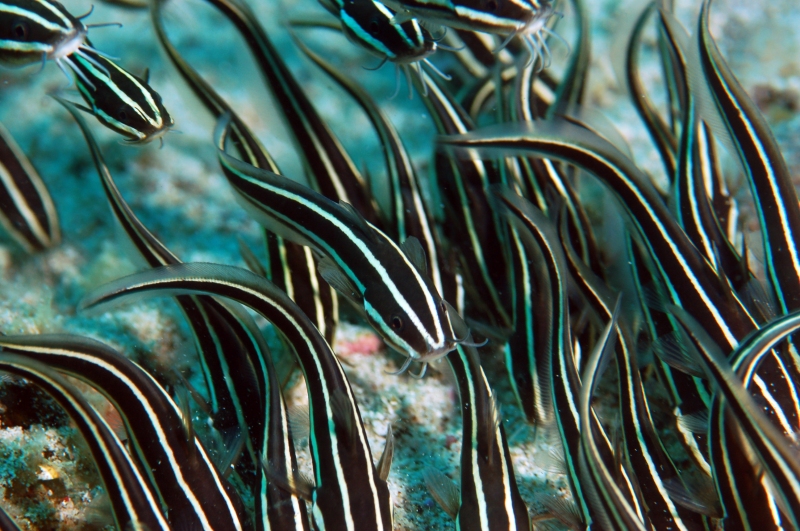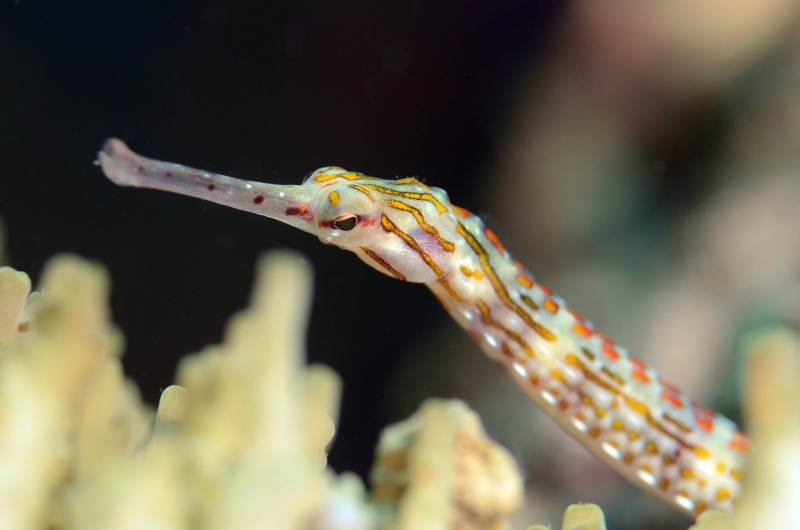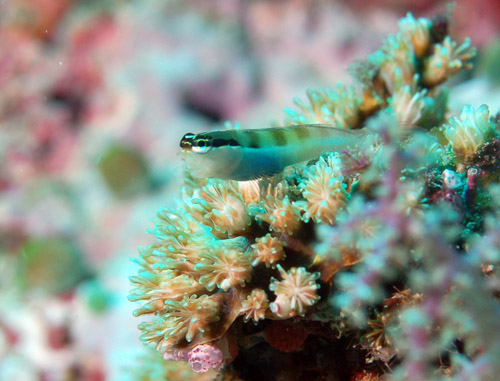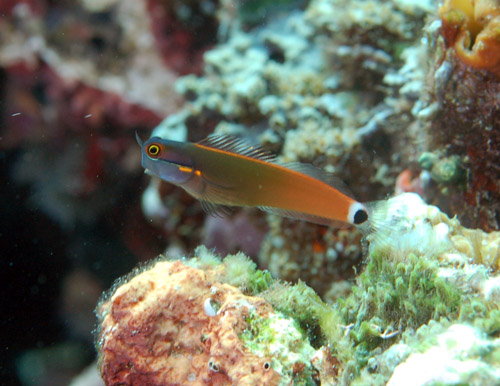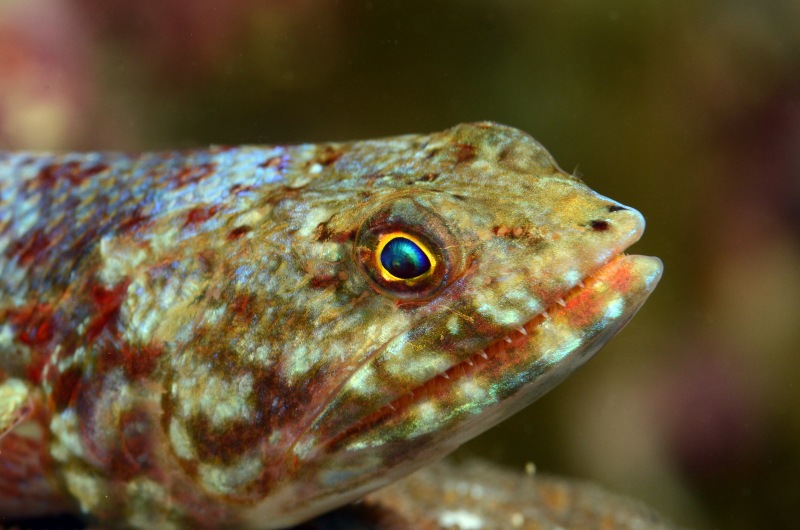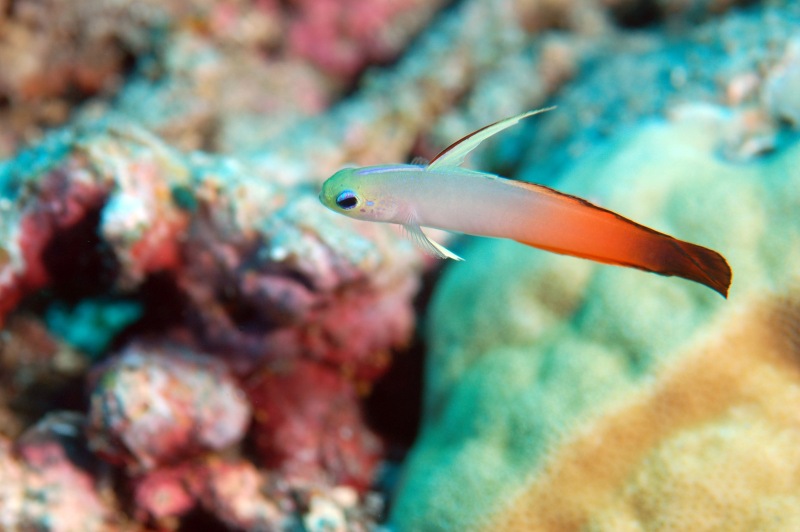
The Fire Goby, Fire Fish, Fire Dartfish, or Red Fire Goby is a marine dartfish. This fish is most commonly found near the substrate of the upper reef in tropical marine waters. These waters include the Indo-Pacific, Central Pacific, east African waters, Ryukyu Islands, Japan, New Caledonia, and Pitcairn Islands.[1] They swim as deep below the surface as 70 meters, and usually hover directly above the ocean floor, facing the current to catch their prey.[1] They eat mostly copepods, zooplankton, and crustacean larvae. They usually have a bright yellow head, merging into a white body, gradually shading into a red-orange tail. Their dorsal fins are very long, and the fish flicks it back and forth. This is used as a signal to conspecifics. As a full grown adult, it reaches a maximum length of 9 centimeters (3 in). Adults occupy sandy burrows alone or in pairs, while the juveniles live in small groups. These fish are monogamous. They will retreat to burrows if threatened.
